Denise Gasser
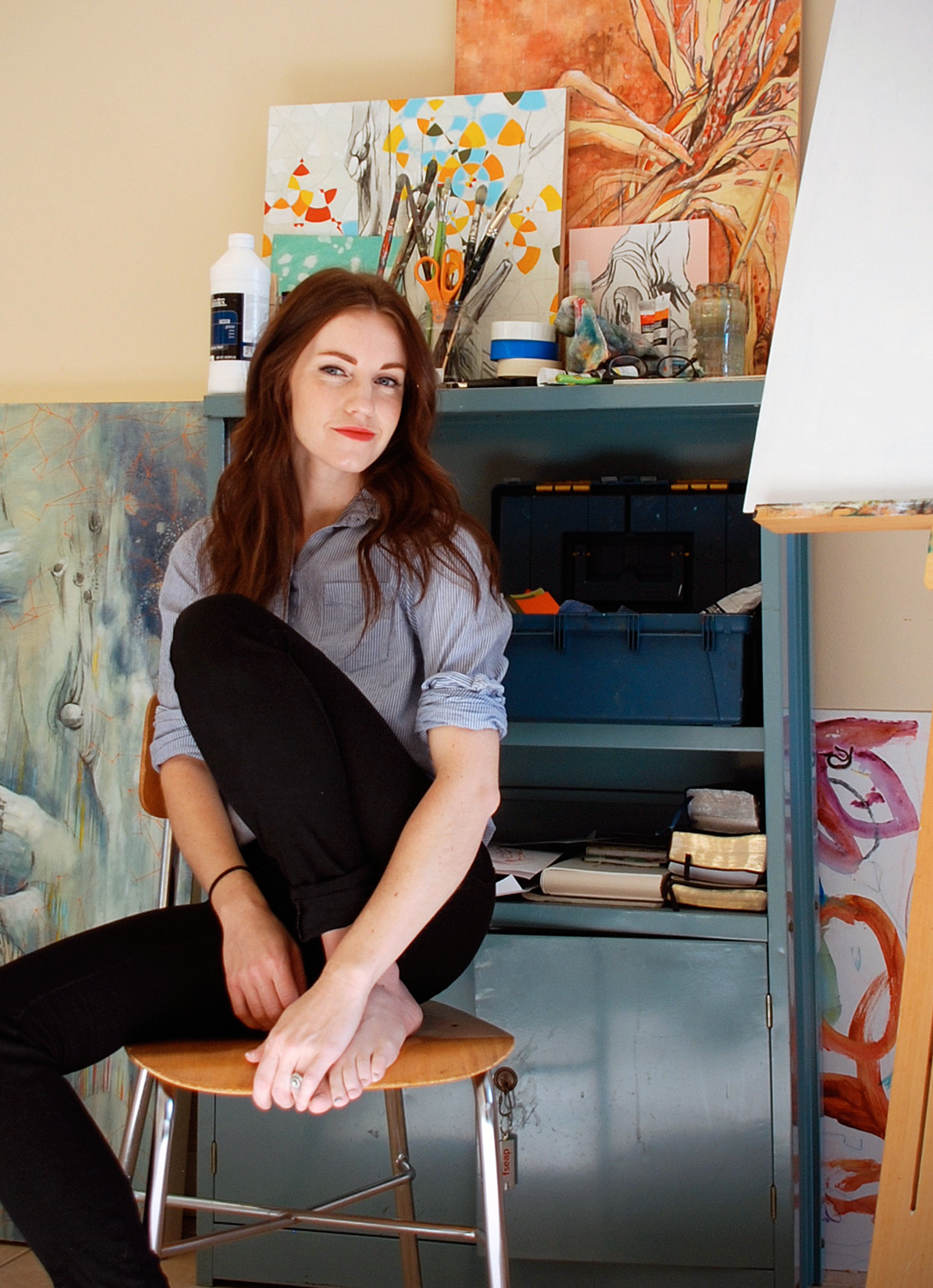
So, Denise, since you and I are already friends, I’m just going to jump in and hope everyone else is able to catch up. We’ll fit in basic background facts later, but first I want to tell you: whenever I see a particularly peculiar tree, I wish you were around to share it with. I suppose if I carried a camera with me this would be possible, but photos are less than trees and paintings are something else all together. How do trees manifest themselves in your relationships with other people?
Ha! When I heard you would be the one interviewing me I was just bracing myself for some confusingly thought-provoking questions—you did not disappoint!
I don’t know that I would specifically say that trees manifest themselves in my relationships with others, so much as I would say that my relationships with others seem to manifest themselves in the way I feel about trees. They, like people, all have a story to tell, and the more strange and flawed they may appear, the more interesting their story probably is … and the more compelled I am to become better acquainted. But the great thing about trees is that when you spot a super interesting one, you can stare as long as you want, draw pictures of them, and take extreme close-ups without being creepy.

Trees have been symbolic—best I can tell—as long as we’ve had people. From Adam and Eve to Yggdrasil, trees have been working their way deep into our subconscious. Can you nail down when trees first made their way into you? How did they become your muse?
Trees worked their way into my sketchbook repeatedly throughout my college years. I made some of them into watercolors or prints, but didn’t think much of it at the time. After graduating I was living in Salt Lake City, jobless for the summer and wondering if I would ever paint again. One afternoon I was feeling unusually motivated, so I grabbed my sketchbook and headed out to explore the urban sprawl that surrounded my apartment building. Surprisingly, the run-down gas station/hookah shop and mega car wash weren’t offering the inspiration I was hoping for. So I opted for the row of hedges and trees that lined the neighboring apartment complex. I sat for a while and made some really nice, organic sketches. When I got home I grabbed some vine charcoal and drew a large, flowing, slightly abstracted tree directly onto a painted panel. Something clicked. It’s weird, but it was like I finally stopped feeling lost, or so desperate to figure out what kind of work I would make, or what my “style” would be. As I look back through my sketchbooks I can see that it was there all along. Not just trees, but the organic forms, the flowing line quality, and even just the love for drawing. That’s when I really started fusing drawing and painting, experimenting with patterns, and manipulating my materials—because the subject matter was there, and it came so naturally.
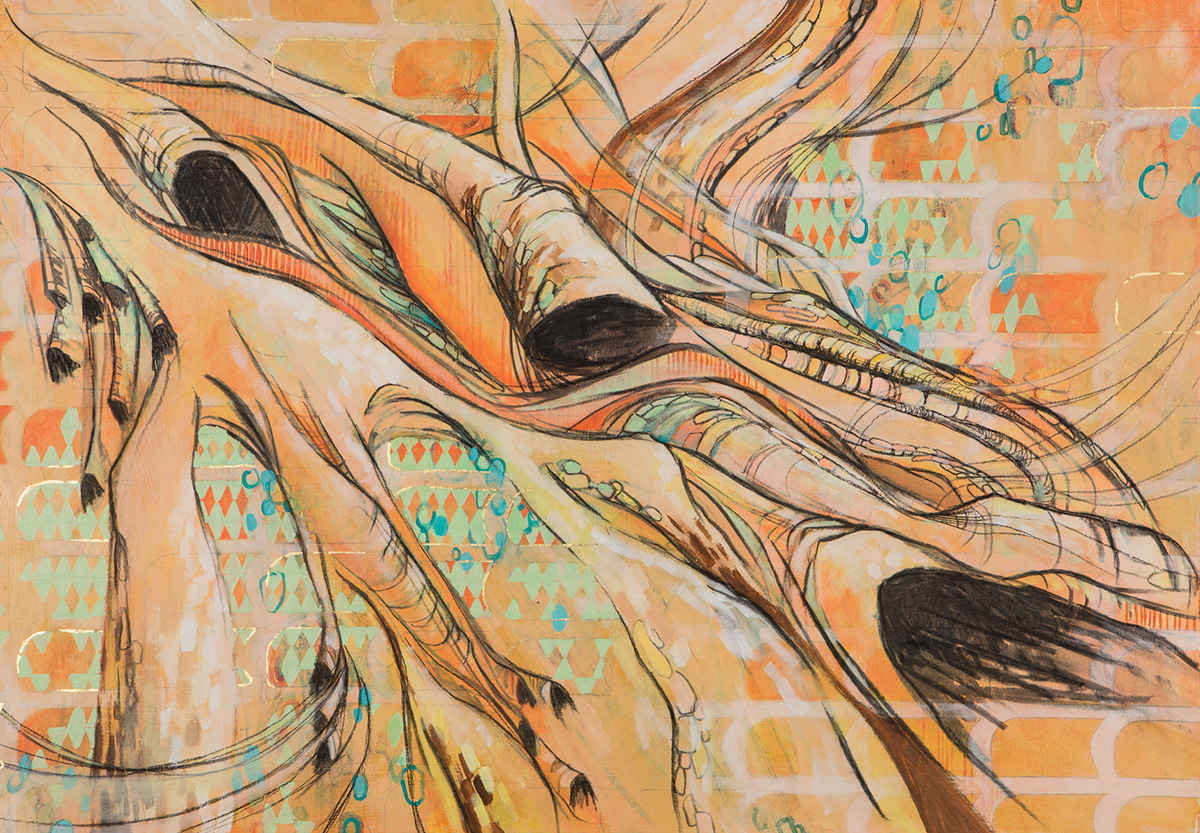
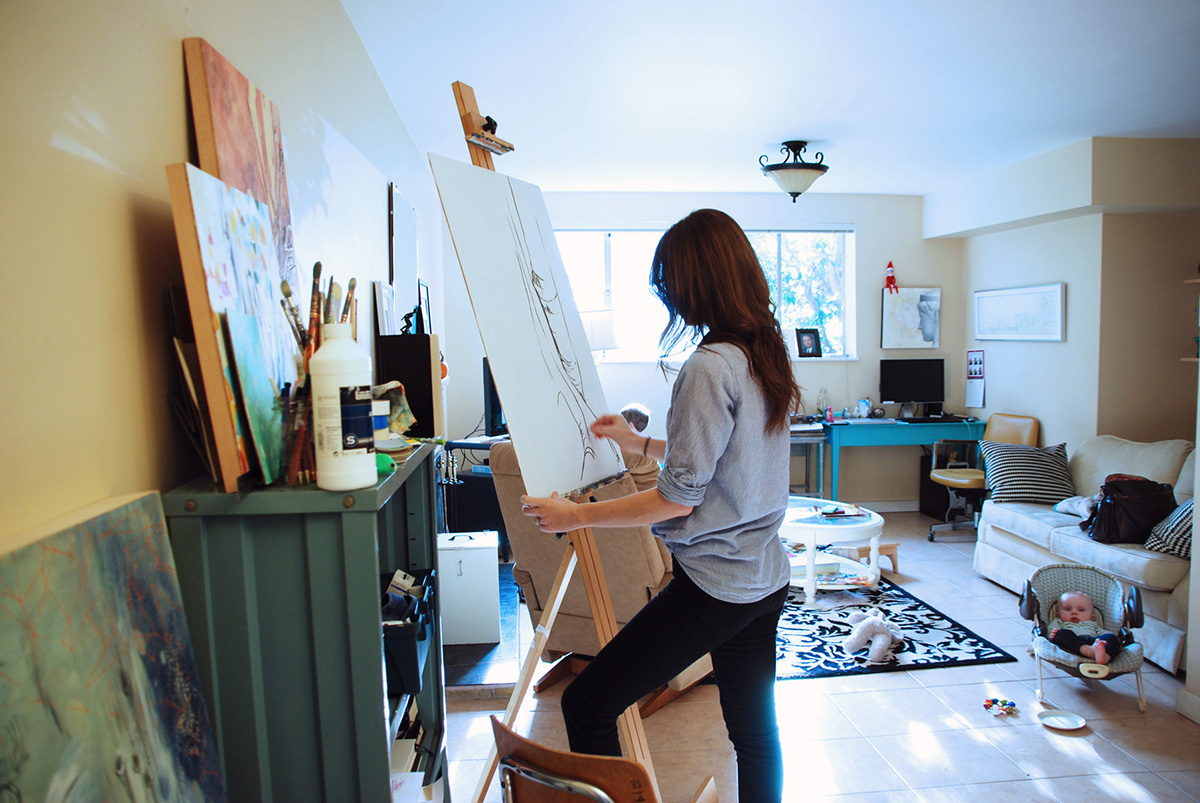
When did you discover that drawing would be a serious lifelong pursuit?
I have always loved art. Even in kindergarten I prided myself on my “advanced” drawing skills and shook my head sadly as I observed the feeble attempts of my classmates. I continued drawing and painting through high school, and I always wanted to study art “when I grew up.” So it was a little surprising that when I got to college I began to doubt myself. I guess I was trying to be practical, or maybe I just didn’t think I was good enough to make it. I considered dozens of different majors and didn’t even really take an art class until the end of my second year. I had all but settled on being a dental hygienist when I finally took a basic 2D design class. This changed everything. I worked obsessively on every project while ignoring basically everything else in my life. It was like rediscovering myself. At the end of that semester my teacher told me it would be a great travesty to study dental hygiene and encouraged me to look into the art education program instead. It was a huge turning point in my life. I have been making art ever since.

I’ve heard this story many times—hitting adulthood and thinking being responsible means giving up on anything other than certain allowed fields. The number of times my own mother suggested dentistry! I guess I understand the impulse to be “practical,” but there’s certainly a downside if we as a culture push too many people out of the arts. What do you think our future, as Mormons, will be like if we keep producing thousands of MBAs to every MFA?
It will obviously be a great loss for our church. It takes an array of unique individuals with diverse backgrounds, passions, skills, and personalities to continually knit our church together and bring forth the kingdom of God. To see our members gravitate too far in, or away from, any one direction would be a loss. But there is something significant about the arts, especially considering our Mormon history. We have a rich tradition of art and poetry, music and dancing, of enriching and beautifying. Our pioneer ancestors left us a great artistic legacy that I don’t think we can live up to if we all become doctors, lawyers, and accountants.
It’s tough, though, because the Church also has a strong tradition of family and encourages mothers to stay home to raise their children rather than entering the workforce. So there is this added pressure for many Church members, especially fathers, to provide for a family on a single income. The reality of that is pretty harsh. The arts aren’t exactly known for being lucrative, so it’s really no surprise that many people feel it’s unrealistic to pursue it as a career. Some may choose to “do the art thing as a hobby.” But life is busy and complicated, and often we can do little more than get through the day, barely accomplishing our immediate tasks at hand. Staying invested in art and keeping your drive and passion to create is so challenging when you are trying to fit it into the tiny, leftover corners of your life. But those who pursue a career in the arts are really allowed to plunge the depths of their potential and give back something that we all (a religion, a society, a world) benefit from.
Keeping a continuous workflow has been a constant battle for me. As a stay-at-home mother of two young children I find it almost impossible at times to keep painting; at the end of the day I often feel I have nothing left to give. But I have also found that when I force myself into my “studio” anyway, I am so much more stable, balanced, and fulfilled.
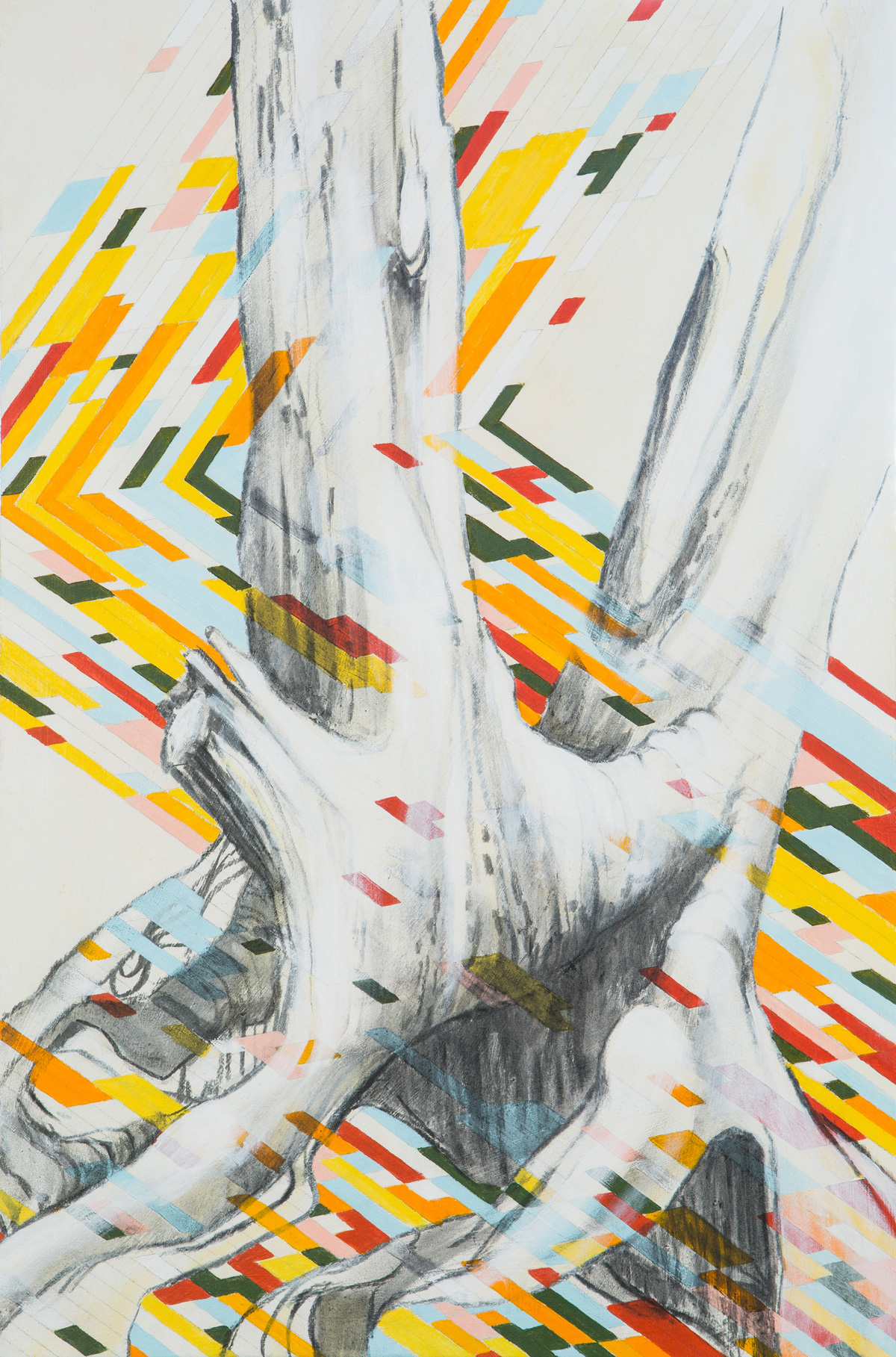
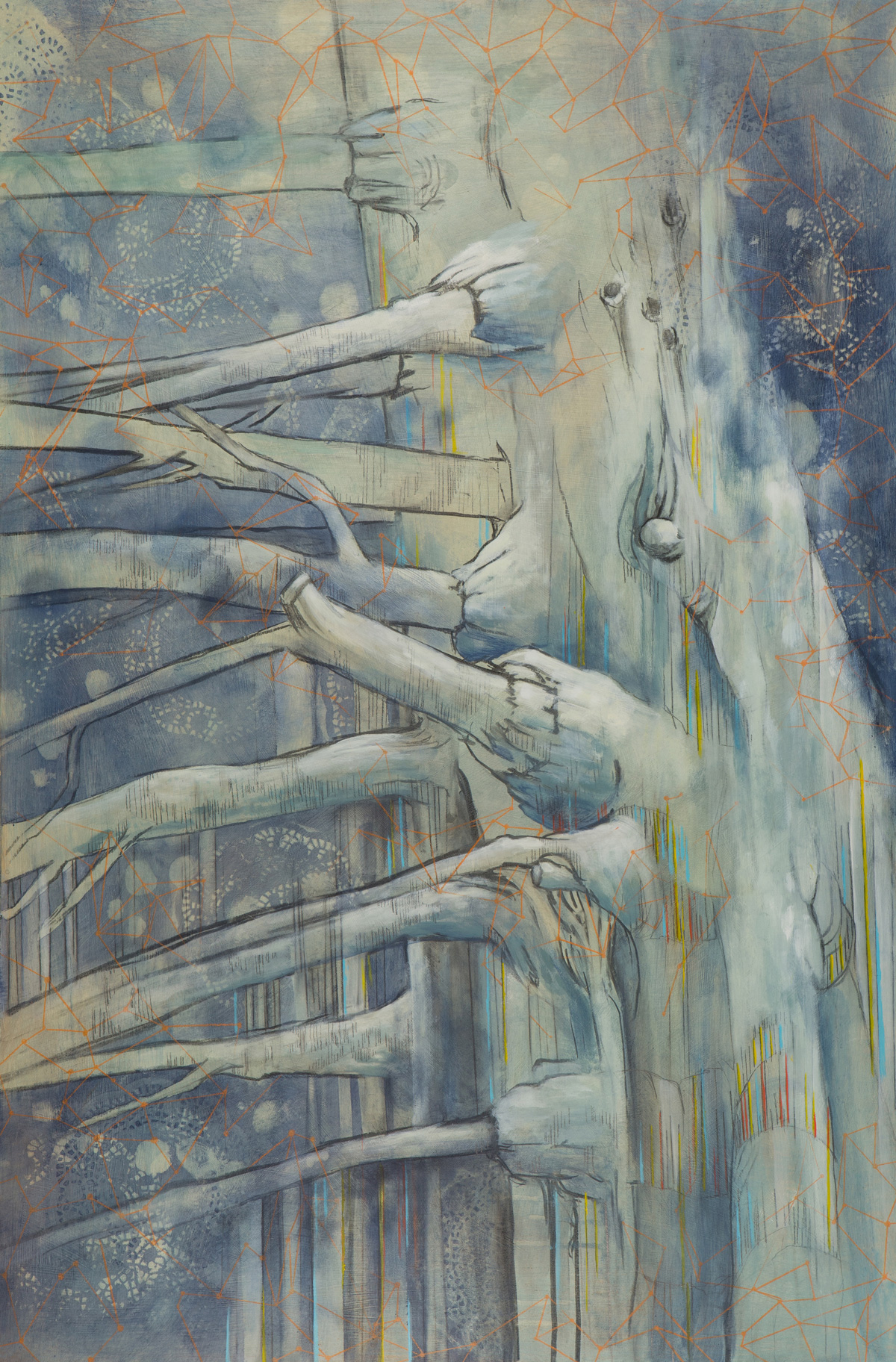
I think this idea that the arts make us more “stable, balanced, and fulfilled” is absolutely true, whether we are consuming or producing. What art are you a consumer of these days?
I have actually been really interested in, and surprisingly inspired by, children’s book illustrators. I spend an inordinate amount of time in the children’s section of the library these days, and I am consistently impressed with the way that many illustrators are able to walk that fine line between illustration and fine art. I feel like illustrations can get away with a lot more, like they can be playful, kitschy, overly fantastical, funny—things fine art is usually not allowed to be. Some of the illustrators I am most excited about right now are Pamela Zagarenski, Brian Wildsmith, Alice Melvin (especially Counting Birds), Oliver Jeffers, Lisbeth Zwerger, and Anne Bachelier (especially her Alice’s Adventures in Wonderland). Their work feels really intuitive, and their use of color and pattern are really inspiring. I think it’s taken my work in a more colorful, lighthearted direction.
That’s a great list. I know Brian Wildsmith, of course, and we have an Oliver Jeffers book too. The others I was less familiar with, but now I’ve googled them and I agree: they’re great. And now I think you’ve already begun an answer to this question, but I know you have more to say: What are you doing to share your passion with your sons?
We definitely do a lot of art together. Liam gets pretty excited when I actually get up the ambition to give him an “art class.” He was the distant bystander of many art classes when I used to teach private lessons, so he loves when he gets the chance to be the student. I also buy him sketchbooks so that most of his drawings are in one place and he can pull it out on his own anytime. I think the most important way I share my passion, though, is just through day-to-day interactions. I keep my easel and supply cabinet right in the middle of our living space so Liam sees my work on the easel every day. Sometimes we have little conversations where he tells me what he likes about my paintings. It’s surprisingly validating! I also try to help him see the world the way an artist sees it. We always try to point out beauty when we come across it, whether that be nice views from the car window, or moss on the trees, or even just commenting on how beautiful the sunshine is. I also like to tell him the names of the authors and illustrators of the books we read together. I think it all makes a difference. As for Grey, at eight months, he is still the silent observer of it all. Though I do occasionally strap him to my chest while I work and let him chew the end of a semi-clean paint brush. So that’s a start at least.

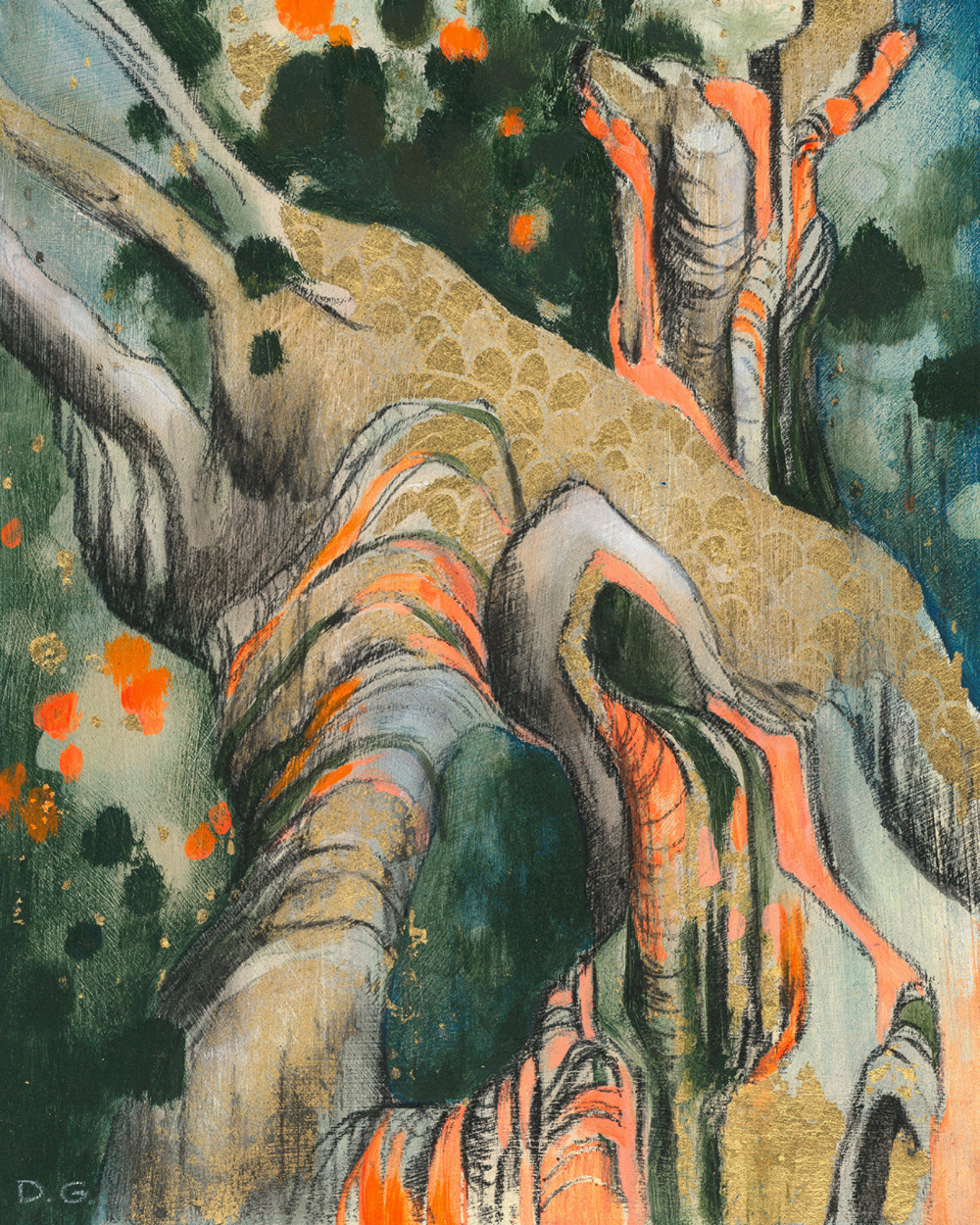
Ignoring the fact that I love your art (I’ll bet you didn’t know we already own three of your pieces), one of the things I admire most about you is how you, Denise, who clearly have what it takes to be a solitary visionary, are such a killer collaborator. The first work of yours I saw was for 9 Muses which—correct me if I’m wrong—involved eight other painters and nine poets. And the impact you had on artists in our ward (before you abandoned us for Canada) as we met together and worked together and discussed each other’s work has proven irreplaceable. You have a great talent as a teacher, mentor, friend.
We’ve already hit on these ideas of community, but let’s look forward now. You will have a fulfilling personal career (of course), a fulfilling family life (of course), and through it all you will remain your charming, affable, approachable self. These seem pretty inevitable to me. But then, like Lehi, your turn will come to lie down in the cold and silent grave, from whence no traveler can return. Now, no one gets to decide their legacy, but rare is the person too shy to imagine it. If it’s not too morbid, how do you want to be remembered by those who will someday replace us?
Haha, you are way too kind in your compliments. I’m glad all those things seem inevitable to someone, because on most days I’m not so sure! Honestly, I think I would want to be remembered as someone who never quite “had it all together,” but died trying. I can’t tell you how many times I have berated myself, saying, “Why can’t I just pull it together!?” But maybe that’s just it—maybe nobody really ever does have it together … some are just better at looking like they do. Especially in a world of Facebook, Instagram, and mommy blogs where it’s so easy to make it look like we’re “living the dream.” It’s just not real. That’s actually why I started a blog, Denise Paints, detailing the ugly, hilarious, and sometimes wonderful moments I experience in art and motherhood. A lot of people have asked me, “How do you manage to keep painting while mothering two children?” The short answer is, I don’t … at least not very well, anyway. I am always letting something slip, I am constantly forgetting things, and I often feel my contributions are less than adequate. I go for weeks where I don’t paint at all, or I go through weeks where I paint every day and Liam ends up watching way too much TV. It’s a constant balancing act, but it’s worth every bit of the struggle. I want to be remembered for making works of beauty, infused with the very best and worst of everything that is in me.
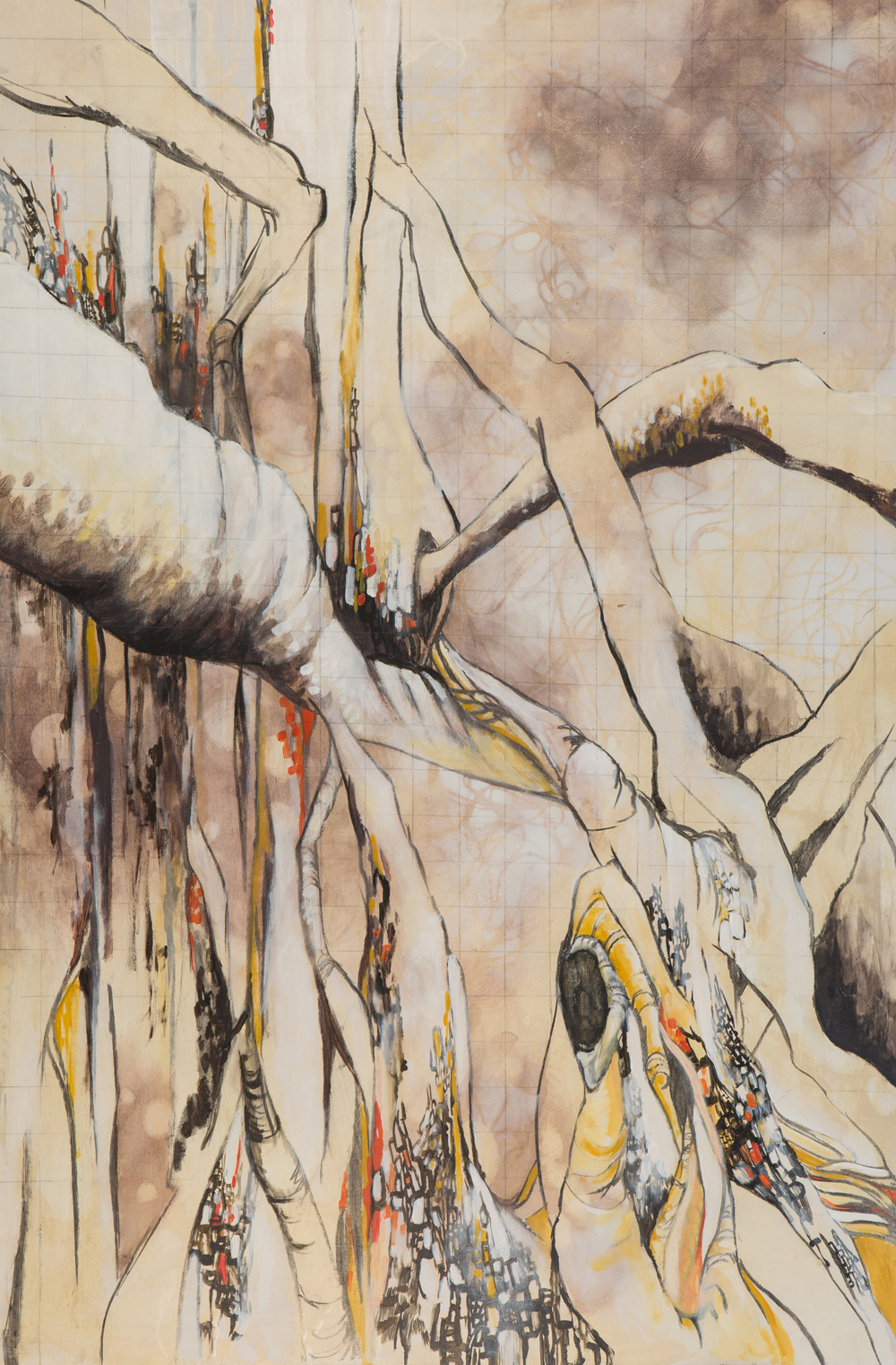
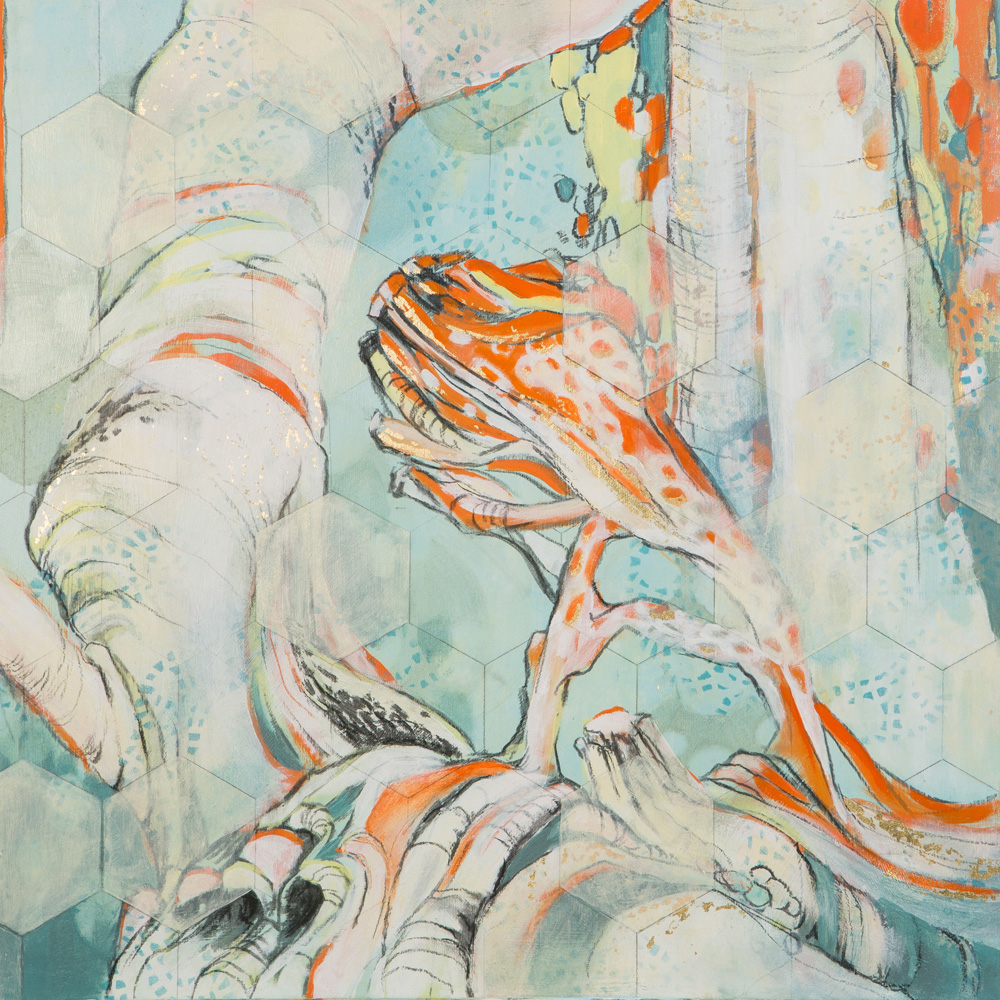
How does the gospel influence your work?
I wouldn’t say that I have ever consciously drawn direct inspiration from the gospel, but obviously the gospel is a huge part of my life, and it colors everything that I do, whether I am aware of it or not. From the time I started painting trees I have been trying to figure out why—what drives me, why do they inspire me so much, what am I even trying to say? It has been interesting these past couple of years, as I have become more thoughtful about my work, to see how many of the themes coming out in my paintings parallel themes found in the gospel. Some of this comes through in my artist statement, like the idea that I embrace tension in my art and use it to strengthen my work, parallels life, and the whole theme of the refiner’s fire. Trees themselves are among God’s most beautiful and significant creations and pop up everywhere in the scriptures, offering wisdom and guidance. Or even just the fact that my main intention is to create works of beauty that will inspire and uplift the viewer … as Mormons, “we seek after these things.” The gospel is there, in subtle tones, informing and enriching every aspect of my life.
Last question. What’s on your easel right now?
A big, colorful, half-finished tree—what else? ❧
